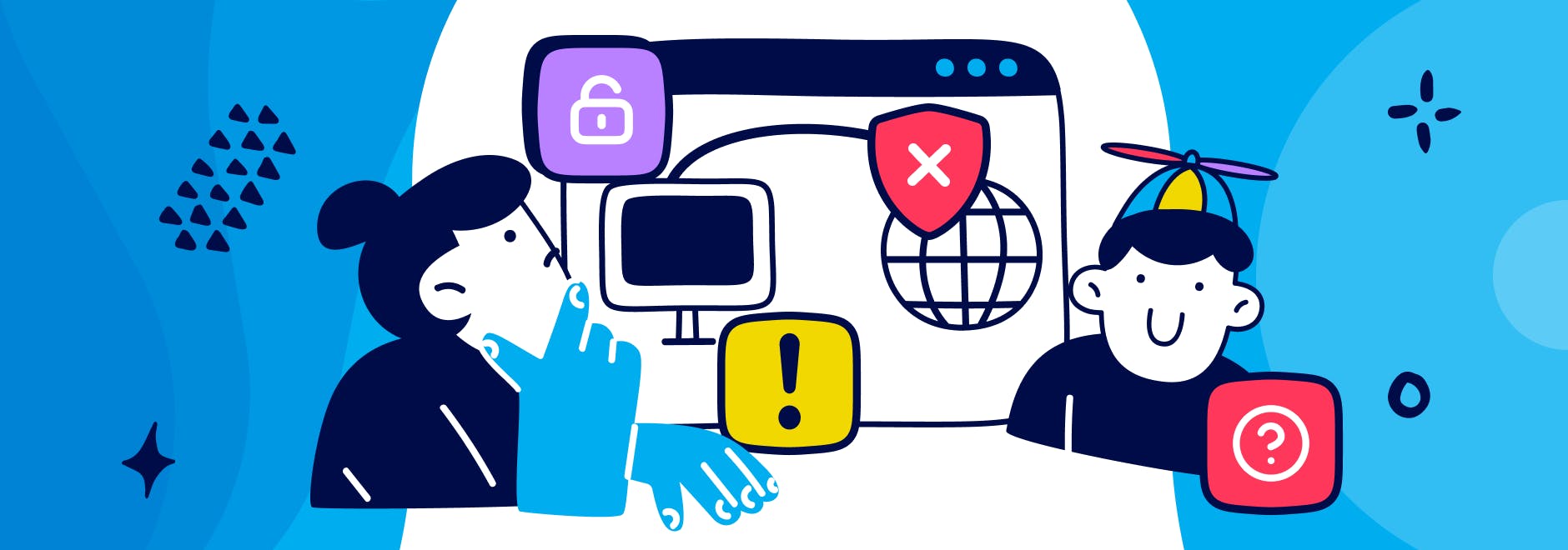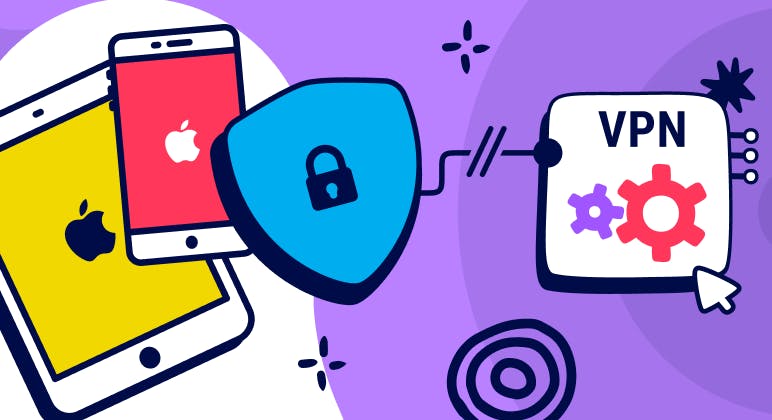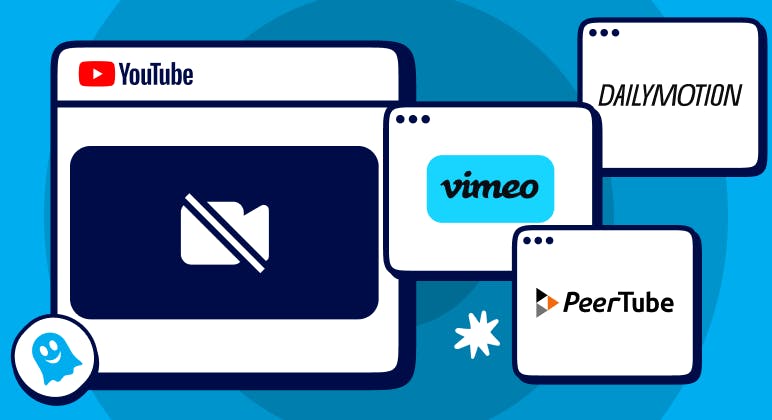Guide
Explaining the Importance of Privacy to Kids
Key Points:
- Online privacy is important for kids to protect their personal information and data online.
- Parents and guardians can teach their kids about online privacy and safety by following Ghostery’s online safety tips for kids.
- Ghostery is a product that can help parents and kids browse the web more securely and privately by blocking trackers, ads, and malware, and giving more control over their personal data.

Understanding Online Privacy
Online privacy is the right to control what information you share and who can access it when you use the internet. It is important to protect privacy on the internet for kids because their personal information and data can be used for harmful purposes, such as identity theft, cyberbullying, and inappropriate content.
According to a Pew Research Center survey conducted in March 2020, 66% of parents in the U.S. say that parenting is harder today than it was 20 years ago, with many of them blaming social media and smartphones.
With that, let’s talk about privacy for kids and how to keep children safe online. We’ll share some tips on how to explain online privacy for kids and help them stay safe online.
The Importance of Privacy
Kids today are growing up in a digital world where they can access and share information online with just a few clicks or taps. While this can be fun and educational, it can also expose them to potential dangers and threats.
Online privacy is important for kids because it helps them protect their identity, reputation, safety, and well-being.
Without online privacy, kids may reveal too much information about themselves or others that can be used against them by hackers, scammers, predators, or cyberbullies.
Online privacy also helps kids respect the rights and feelings of others.
Voice your online privacy concerns
One of the first steps to teach your children about privacy for kids is to set rules and boundaries for what they can and can’t do online and explain the reasons behind them. Tell your kids the rules and why they matter for what they can and can’t do online.
For example, you can tell them not to visit websites that are not suitable for their age, not to download or install anything without your permission, and not to share their passwords with anyone, just to name a few online safety tips for kids.
You can also tell them to ask you questions and tell you anything weird or scary that they see online, like pop-ups, messages, or requests from people they don’t know. This is a more indirect way to stress the importance of privacy and cyber safety for kids.
Establishing a Foundation of Trust & Starting the Conversation
One of the best ways to protect your children’s online privacy is to establish a foundation of trust and start the conversation with them early. By talking to your kids about the risks and benefits of using the internet, you can help them develop critical thinking skills and make informed decisions.
You can also show them how to use privacy settings, block unwanted contacts, and report inappropriate content. The more you communicate with your kids, the more likely they are to come to you if they encounter a problem or have a question.
However, starting the conversation about online privacy can be challenging for some parents. You may feel overwhelmed by the amount of information and platforms available, or you may worry about invading your children’s privacy or losing their trust.
That’s why it’s important to approach cyber safety for kids and kids privacy in a respectful and supportive way, without being judgmental or accusatory.
You can use everyday situations, such as browsing the web together, reading a news article, or watching a video, to spark a discussion and share your views. You can also ask open-ended questions about kids digital privacy, listen actively, and respect your children’s opinions and preferences.
Remember that online privacy is not a one-time talk, but an ongoing conversation that evolves as your kids grow and technology changes.
Teaching Online Privacy Basics
Another important tip about kids digital privacy is to teach your kids to avoid sharing personal information, photos, and videos online with strangers or on social media.
Personal information includes their name, address, phone number, email, school, birthday, and location. Photos and videos can show what they look like and what they do.
Explain to your kids how their information can be used against them or sold to advertisers who want to target them with ads or products. You can also show them how to change their privacy settings on social media and apps to make sure only their friends and family can see their posts and profiles.
Protecting Children's Identity Online is Important
Online privacy is a crucial issue for kids who use the internet for learning and entertainment. Parents need to be aware of the risks and benefits of online activities and communicate with their kids about how to protect their personal information and data.
So far, we have provided some tips on how to explain online privacy for kids, set rules and boundaries with kids digital privacy, and choose online services that respect privacy for kids. By following these tips, parents can help their kids enjoy the internet safely and responsibly.
Now let's explore how to recognize potential privacy risks.
Recognizing Potential Risks
While the internet can be a great source of information, entertainment, and connection, it also comes with some potential risks to kids digital privacy.
Some of these risks include catfishing, clickbaiting, and phishing.
Catfishing
Catfishing is when someone pretends to be someone else online, using fake photos and information, to trick others into a relationship or scam them out of money. Catfishing can also be used for cyberbullying, revenge, or sexual exploration.
To avoid being catfished, you should be careful about who you talk to online, verify their identity, and never send money or personal information to strangers.
Click-baiting
Clickbait is a word used to describe links, ads, or pop-ups that are designed to attract your attention and make you click on them. They may promise something exciting, shocking, or useful but lead you to malicious websites or downloads that can infect your devices with viruses or malware that can steal your data or damage your devices.
Clickbaiting is when a website or a social media post uses a sensational or misleading headline to attract clicks and views. Clickbaiting can be used to spread false or harmful information, promote products or services, or generate revenue from ads.
To avoid falling for clickbaiting, you should be skeptical about what you see online, check the source and the date of the content, and do your own research before believing or sharing anything.
Teach your kids to be careful about clicking on anything that looks too good to be true or suspicious on the internet. Explain how these can harm kids privacy and security.
One of the benefits of using Ghostery Tracker & Ad Blocker is that it can make your kids less likely to encounter pop-ups and advertisements. This is an easy way to amp up your child’s safety online.
Phishing
Phishing is when someone sends an email, a text message, or a pop-up message that looks like it comes from a legitimate source, such as a bank, a government agency, or a company, but is actually a scam to get you to share your personal or financial information.
Phishing can be used to access your accounts, steal your identity, or commit fraud.
To avoid being phished, you should never reply to messages that ask for your personal or financial information, and never click on any links or attachments in the message. You should also teach your kids how to recognize and report phishing messages
Privacy Settings and Online Safety Measures
Another topic concerning online safety for kids that you should discuss with your kids is how their online activity is tracked by websites, apps, and companies that collect and use their data for various purposes.
Data is any information that can be used to identify or describe you or your behavior online. It can include your personal information, preferences, interests, location, browsing history, and more.
Websites, apps, and companies can use your data to improve their services, personalize your experience, or show you relevant ads or products. However, they can also sell your data to third parties or use it for malicious purposes. Learn more about blocking ads here.
Password managers
A password manager is a tool that helps you create and store strong passwords for your online accounts and devices. A strong password is one that is long, complex, and unique. It should not contain any personal information or common words that can be easily guessed.
A password manager like Dashlane can help your kids create strong passwords and remind them not to share them with anyone. Explain to your kids how passwords can prevent unauthorized access to their data and accounts.
You can also show them how to enable two-factor authentication (2FA) on their accounts for extra security.
Ad blockers
Another tool for online safety for kids is a quality ad blocker. Sometimes ads are malicious and can be gateways for malware.
To blocks ads for free, download the Ghostery Ad Blocker extension and enable it. It’s that easy to browse the web without ads, trackers, and pop-ups!
Supervision and Monitoring
Another way to protect your children’s online privacy is to supervise and monitor their online activities and communications.
Supervision and monitoring can help you prevent or detect potential risks such as cyberbullying, inappropriate content, scams, or identity theft.
Watch out for strangers online
One of the most dangerous online threats for kids is chatting or meeting with people they don’t know in real life. Some people may pretend to be someone else online to trick or harm them. They may use fake profiles, photos, or stories to gain their trust and friendship. They may also try to persuade them to share personal information, photos, videos, or meet them in person.
When it comes to online enticement, girls make up the majority (78%) of child victims while the majority (82%) of online predators are male. And 98% of online predators have never met their child targets in real life. There’s reason to be concerned about your child’s safety online.
Warn your kids about the dangers of talking to strangers online and tell them never to do so without telling you first. You can also show them how to check the credibility of the people they interact with online by looking at their profiles, reviews, or ratings.
Limit their screen time
It is also a good idea to monitor and limit the amount of time your kids spend online, especially on social media and games, to protect them from the dangers of the internet. Too much screen time can affect their health, mood, and productivity. It can also expose them to more online risks and distractions.
Pew Research Center found that 71% of parents of a child under the age of 12 say they are at least somewhat concerned their child might ever spend too much time in front of screens, including 31% who are very concerned about this. That’s also three-fourths of all parents who are concerned about internet safety for children.
Explain to your kids how spending too much time online can harm their wellness and interfere with their other activities, such as homework, hobbies, and sleep. You can also use built-in parental controls to set time limits or block certain websites or apps on their devices.
Talk about texting
Another way to monitor kids privacy is through their phone.
Texting is a fun way for kids to talk to their friends and family. However, it also comes with some risks, such as texting, sexting, and sending or receiving inappropriate messages. Harmful texting is when you send text messages that are rude, mean, or hurtful.
Sexting is when you send or receive sexually explicit messages or images. Inappropriate messages are those that ask for personal information, threats, or requests that make you uncomfortable.
Tell your kids how text messages can be forwarded, saved, or posted online without their consent or knowledge. This can damage their reputation, relationships, and safety. You can also teach them how to respond to messages or people that they don’t want to talk to.
Children’s privacy is protected (kind of)
When considering internet safety for children: We all worry about how to keep children safe online, to protect them from the dangers of the internet.
Kids privacy is protected by law in the U.S. up to age 13, even though they are still minors until age 18.
The Children’s Online Privacy Protection Act (COPPA) is a federal law that requires websites and apps to obtain parental consent before collecting, using, or disclosing personal information from children under 13. It also gives parents the right to review, delete, or limit the use of their children’s information. (You can read the full legislation here.)
While there are some proposals to update COPPA and extend its protections to older children and teens, we cannot rely on the government and companies to protect our data, so we need tools like Ghostery to enhance our online privacy and security.
Ghostery Tracker & Ad Blocker can help you talk about data with your kids by showing them how websites, apps, and companies track their online activity. It can also help them control their data by blocking unwanted trackers and ads.
Why online privacy is so important
Online privacy and safety are essential for kids in our rapidly evolving digital age. Even though our kids are legally protected until age 13 in the U.S., we should protect them for much longer.
As parents and guardians, we have the responsibility to educate our children about the risks and benefits of using the internet and help them protect their personal information and data online.
You can use the tips we shared in this blog post to explain the importance of privacy and have ongoing conversations about their internet use and experiences.
While it may feel daunting in explaining online privacy to a child and protecting children's identity online, you can use resources for more information:
- Federal Trade Commission | Protecting Kids Online
- U.S. Department of Justice | Keeping Children Safe Online
- GCF Global | Internet Safety for Kids: Teaching Kids About Internet Safety
- Consumer Reports | Internet Safety for Kids: Protect Your Child
You can also use the Ghostery Tracker & Ad Blocker as a tool to enhance your online privacy by blocking unwanted trackers, ads and pop ups.
Ghostery browser extension also shows you how websites and companies track your online activity, and lets you control your data.
With Ghostery, you can browse faster, safer, and smarter.
Don’t wait, download Ghostery today and take back your online privacy!

